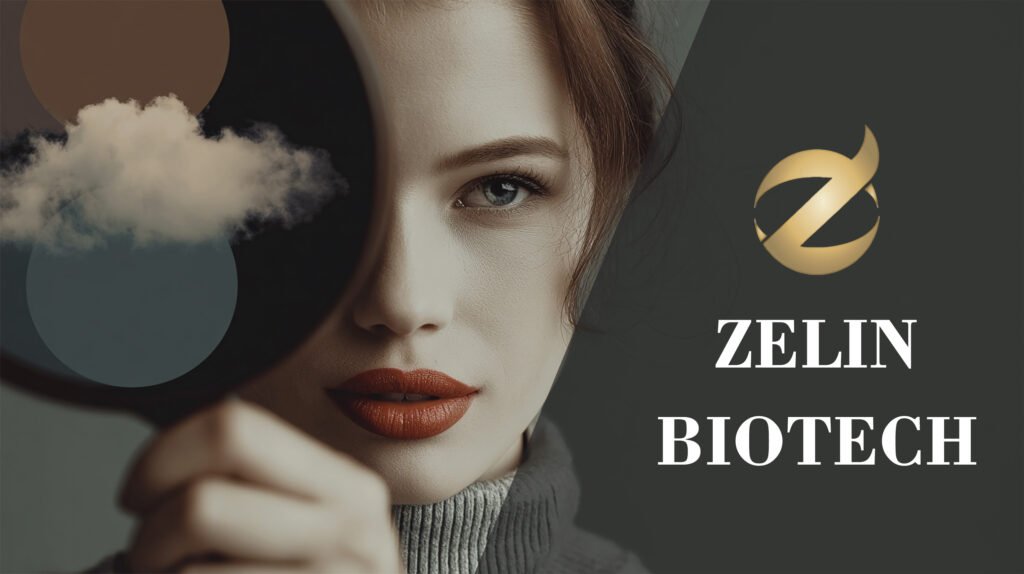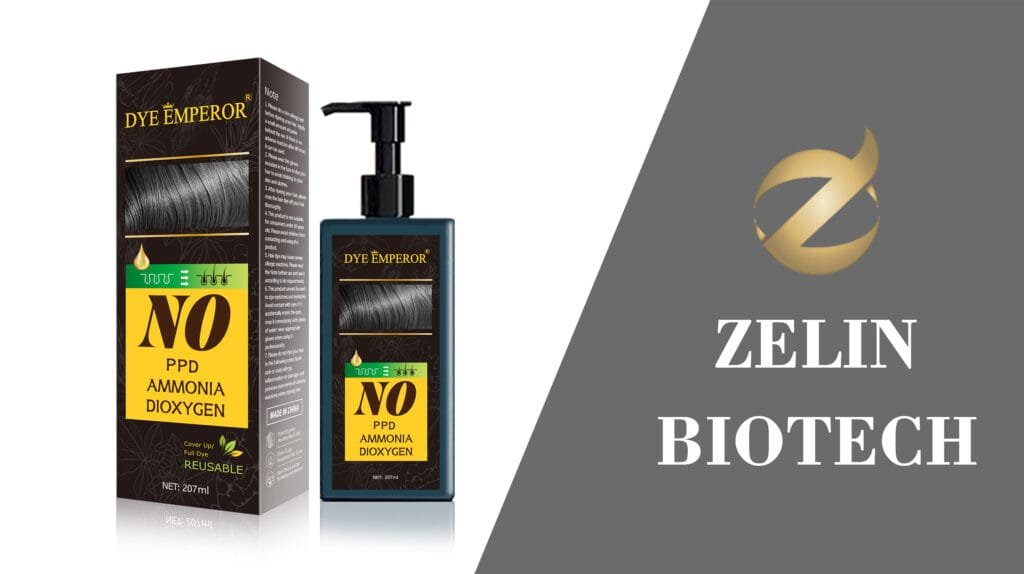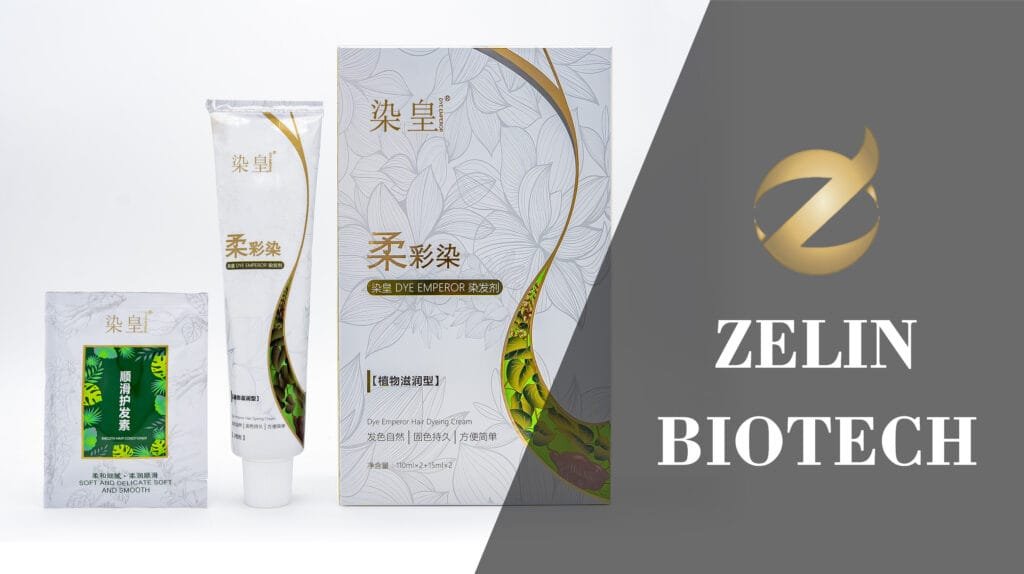Target Audience: Individuals looking to choose a new hair color and want to understand the fundamentals of color theory to make a flattering choice.
Goal of Article: To provide a definitive, expert-led guide on identifying skin undertones, empowering the reader to choose hair colors that will make them look and feel their best.
As a professional hair colorist, I can tell you the single most transformative secret to a stunning hair color has nothing to do with the latest trend. It’s a fundamental principle of color theory: understanding your unique skin undertone. I’ve seen it countless times in my chair—a client comes in with a picture, but the color that truly makes them glow is the one that harmonizes with the subtle, natural tones in their skin.
Many people mistakenly believe their surface skin color (fair, medium, deep) or their natural hair color dictates their tone. But the real magic lies in the hue beneath your skin. Learning to identify this is the crucial first step to unlocking a palette of hair colors that will illuminate your complexion, brighten your eyes, and look effortlessly natural.
So, what does all this “tone” talk really mean? Put simply, the most flattering hair colors are those that complement, rather than clash with, your skin’s innate warmth or coolness. Warm skin tones shine against warm hair colors; cool skin tones pop against cool hair colors. It’s a simple rule that, once you learn to identify your undertone, becomes your most powerful tool in the beauty aisle or the salon chair. This is exactly what I’m going to walk you through, step-by-step.

Step 1: Understand the Foundation – The Three Undertone Types
Every skin tone, from the fairest porcelain to the richest ebony, possesses an underlying hue. In my experience, virtually everyone falls into one of three primary categories:
Cool-Toned: Your skin has subtle, underlying hints of blue, pink, or red. When you look at your complexion, it might have a natural rosiness.
Warm-Toned: Your skin exhibits underlying golden, peachy, or yellow tones. There’s a natural warmth that radiates from your complexion.
Neutral Undertones: You have the best of both worlds! Your undertones are a balanced mix of both warm and cool, or they simply mirror your surface skin color without leaning strongly in either direction.
A Note on Olive Skin: If you have an olive complexion, your undertones can be more complex. You can still lean cool, warm, or neutral, but with an added greenish, grayish, or yellowish cast that is characteristic of this beautiful skin type. The “Paper Test” below is often very revealing for you.
Crucial Distinction: It is vital to separate your skin’s surface color from its undertone. They are not correlated. I have worked with countless clients with very fair skin who have warm, golden undertones, and clients with deep, rich skin who have cool, almost blueish undertones. Your undertone is your personal color constant, and knowing it is a game-changer for choosing not just hair color, but also makeup, clothing, and jewelry.
Step 2: The Expert’s Toolkit – 6 Proven Methods to Pinpoint Your Undertone
I always advise my clients to try a few of these methods in natural daylight for the most accurate reading. One test might give you a hint, but two or three will give you a definitive answer.
1. The Vein Test: My Go-To Quick Check
This is the first thing I often do in a consultation because it’s so quick and effective.
How to do it: In natural light, look at the veins on the inside of your wrist.
What to look for:
Blue or Purple Veins: You almost certainly have cool undertones.
Green or Olive Veins: You are in the warm undertone family.
A Mix of Blue and Green (or they’re hard to distinguish): You are likely neutral.
Expert Tip: This test is easiest on those with fairer skin where veins are more prominent. If you can’t get a clear read, don’t worry—the next tests will help clarify.
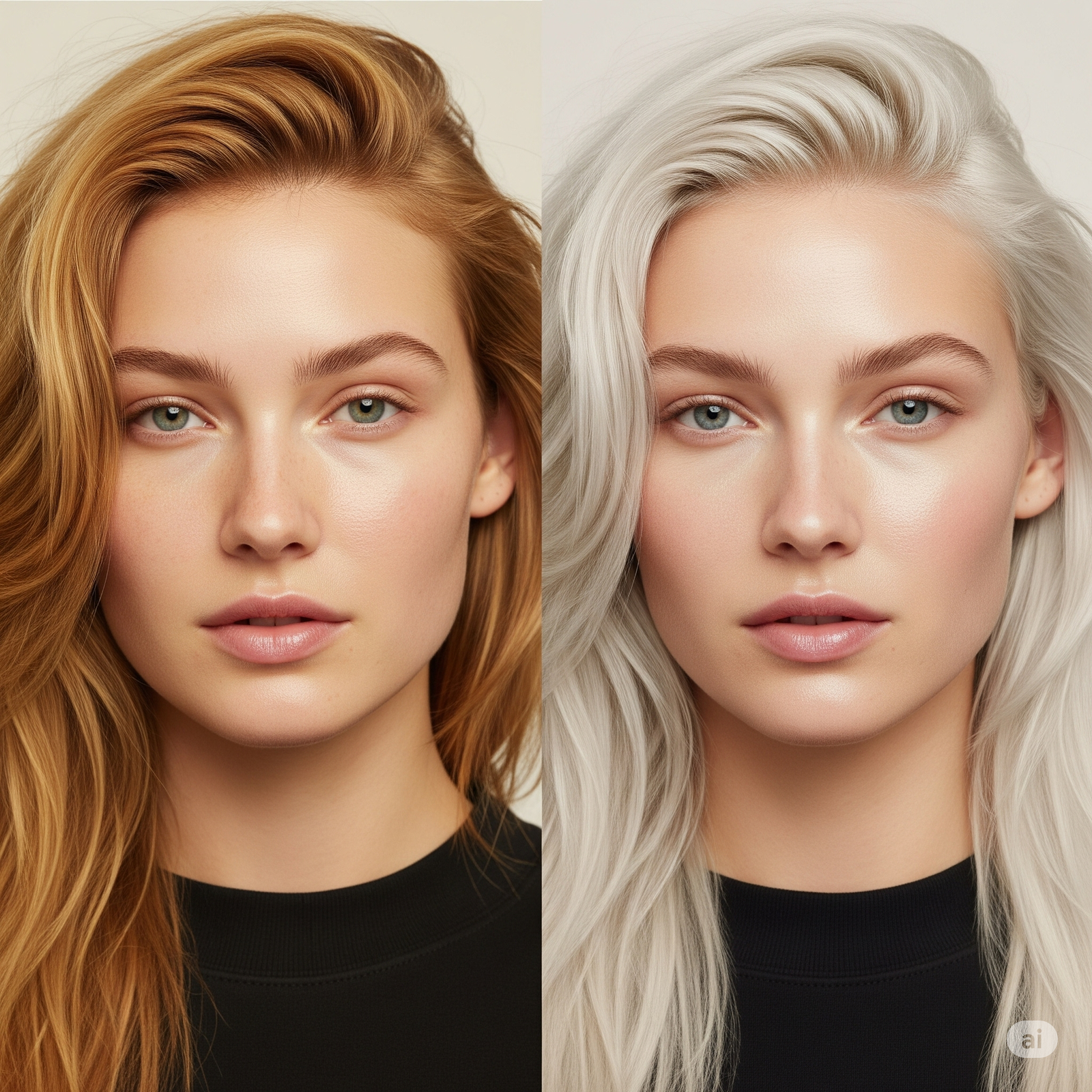
2. The White Paper Test: An Unbiased Lens
This is a fantastic method for isolating your undertones without the influence of surrounding colors.
How to do it: Hold a piece of crisp, pure white paper next to your face (with no makeup on).
What to look for:
Does your skin look more yellow, peachy, or golden in comparison? You have warm undertones.
Does your skin appear more pink, rosy, or blueish? You have cool undertones.
If you don’t see a clear lean one way or the other, you’re likely neutral.
Expert Tip: Be sure to use true white, not off-white or cream, as that will skew your results by adding warmth.
3. The Jewelry Test: Your Inner Sparkle
This is a personal favorite because the results are often immediate and obvious. Your skin will either come alive or look dull against the wrong metal.
How to do it: Drape both silver and gold jewelry across your hand or near your face.
What to look for:
Silver Illuminates Your Skin: If silver, platinum, and white gold make your complexion look radiant, you have cool undertones.
Gold Makes You Glow: If gold, rose gold, and bronze make your skin look vibrant and healthy, you have warm undertones.
Both Look Great: If you can pull off both without one looking significantly better, you are a fortunate neutral.
4. The Sun Test: How Your Skin Reacts
Your skin’s natural reaction to the sun offers powerful clues.
How to do it: Think about your last time in the sun (and please wear sunscreen!).
What to look for:
You Tan Easily: If you tend to tan into a golden brown, you are most likely warm-toned.
You Burn or Turn Pink: If you burn easily and struggle to tan, you are almost certainly cool-toned.
You Burn, Then Tan: If you might burn a little at first but can develop a tan, you may be neutral.
Expert Tip: This is an observational tool only! Always protect your skin with a high-quality SPF, regardless of your undertone.
5. The Blusher Test: A Pop of Color
This is a fun, practical way to see which color family harmonizes with your face.
How to do it: Dust a true pink blush on one cheek and a peach/coral blush on the other. Apply a bit more heavily than usual for clarity.
What to look for:
Pink looks natural and flattering: The pink blush enhances your natural rosiness, indicating cool undertones.
Peach makes you look healthy and glowing: The peach blush brings out a natural warmth, meaning you have warm undertones.
Expert Tip: Using matte blushers without shimmer will give you the clearest result.
6. The Window Test: A Look in Your Eyes
How to do it: Stand near a window with a mirror and look closely at the skin right beneath your eyes.
What to look for:
If this area looks yellowish or greenish, it points to a warm tone.
If it appears more purple-ish or blueish, it indicates a cool tone.
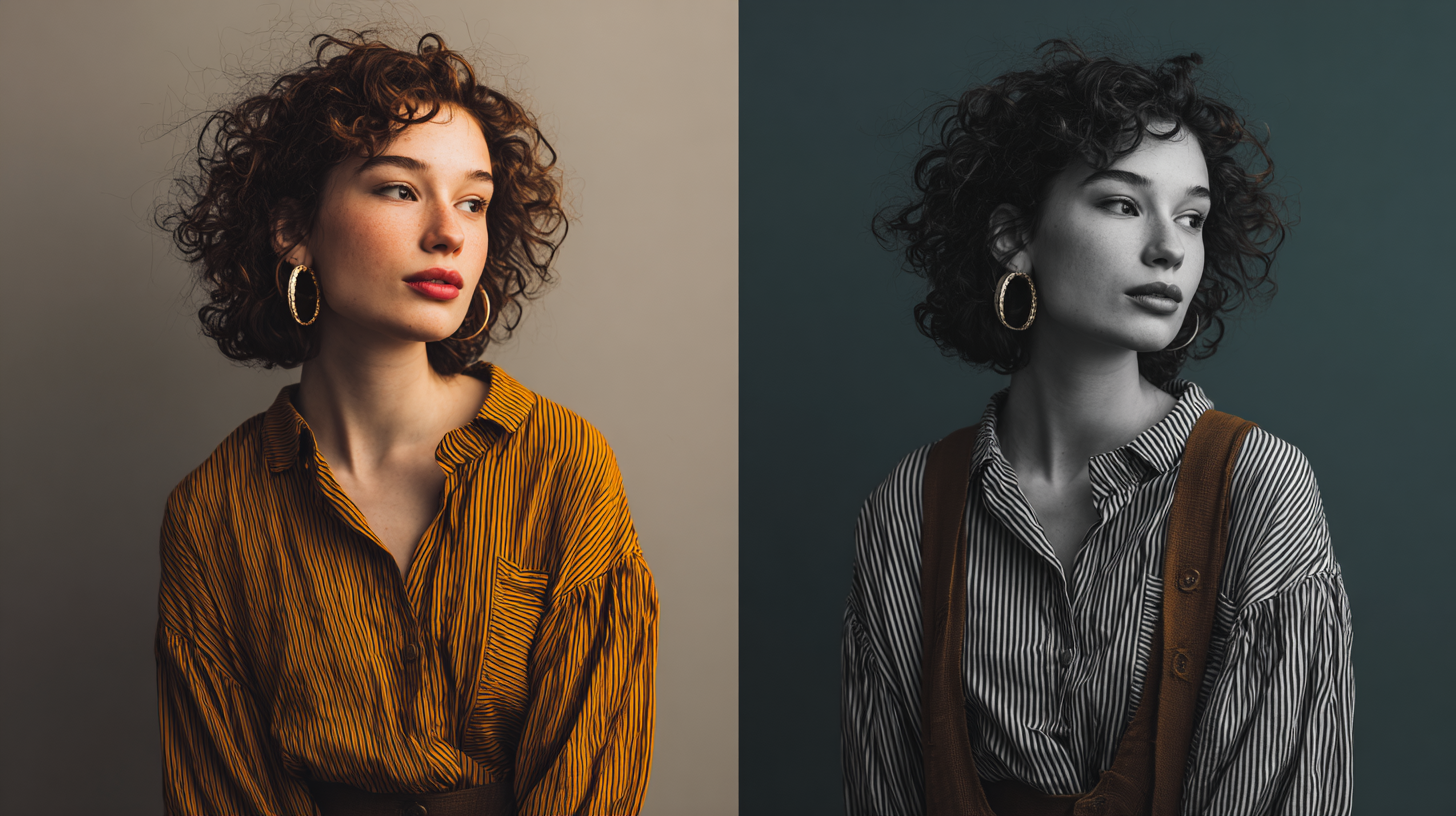
Step 3: Translating Your Undertone into the Perfect Hair Color
Now for the best part! Once you’ve confidently identified your undertone, choosing a hair color becomes an exciting, guided process. Here is the framework I use with my clients:
For Cool Undertones: Your goal is to choose colors that have cool, ashy, or neutral bases. Think:
Blondes: Platinum, ash blonde, beige, icy blonde.
Browns: Ash brown, chocolate brown (without red tones), cool dark brown.
Reds: True reds, burgundy, deep cool reds (like cherry).
Fun Colors: Blues, purples, pastels with a cool base.
[Suggestion: Link to your article/gallery of ‘Cool-Toned Hair Color Ideas’]
For Warm Undertones: You will look breathtaking in colors that have golden, honey, or red bases. Think:
Blondes: Golden blonde, honey blonde, strawberry blonde, caramel.
Browns: Golden brown, chestnut, auburn, rich mocha.
Reds: Copper, rich auburn, warm ginger.
Fun Colors: Oranges, warm pinks, rich yellows.
[Suggestion: Link to your article/gallery of ‘Warm-Toned Hair Color Ideas’]
For Neutral Undertones (The “Wild Card”): You can pull off a wide spectrum of colors! My advice is to consider your eye color and personal style. You can lean slightly cool with an ash brown or go warm with a honey blonde and look equally fabulous.
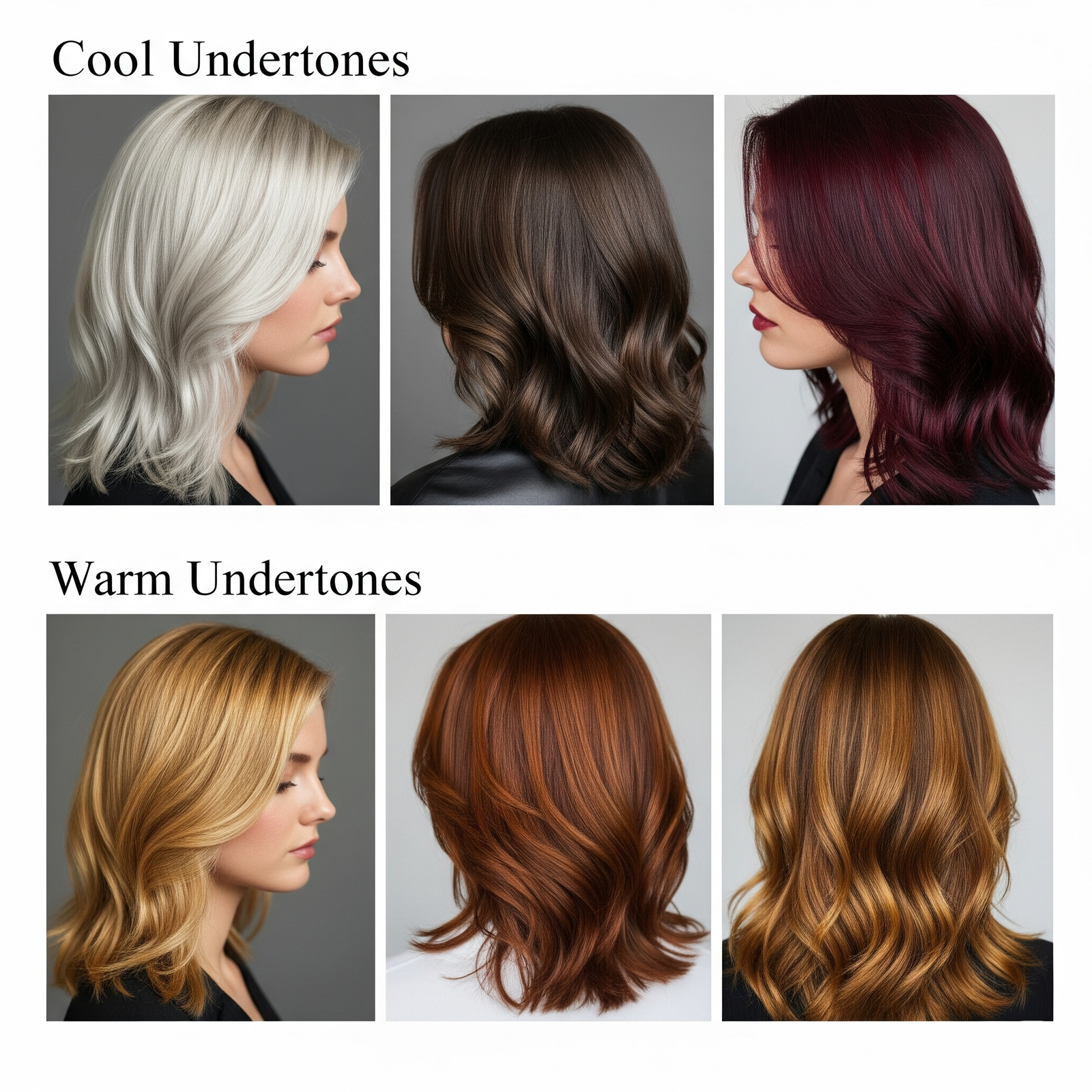
This knowledge is your new superpower. By harmonizing your hair color with your skin’s natural undertone, you create a cohesive, radiant look that appears intentional and incredibly flattering. Happy coloring!

